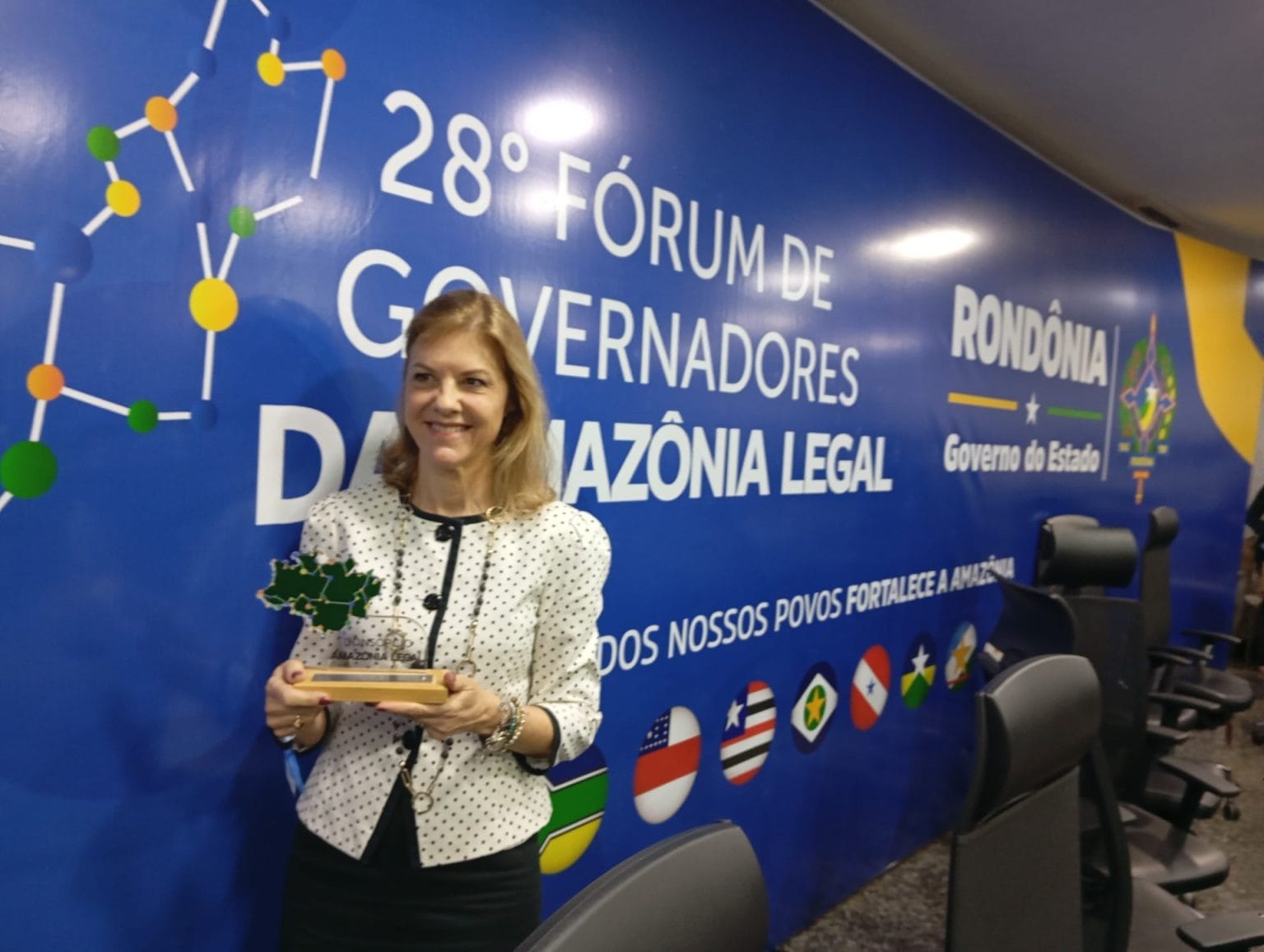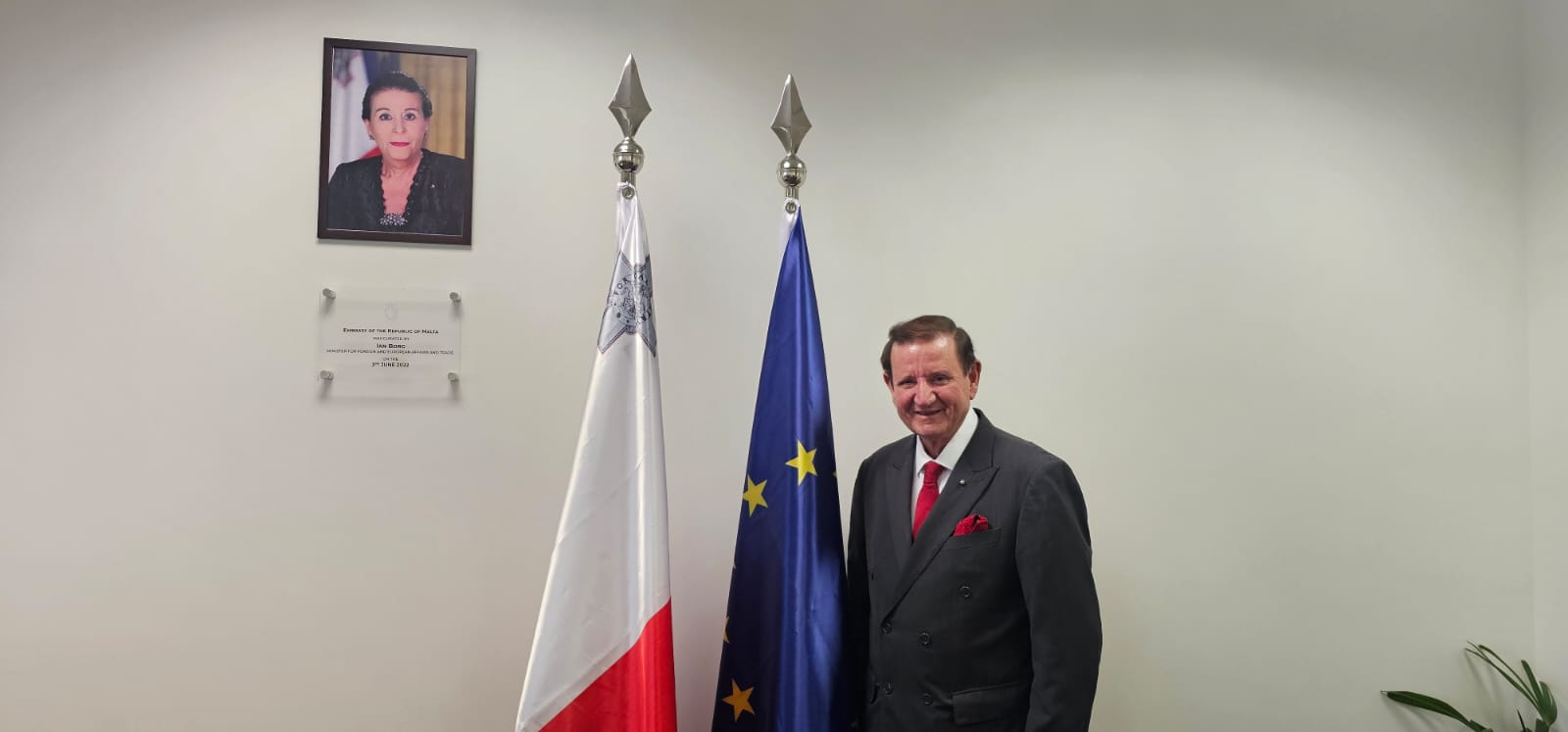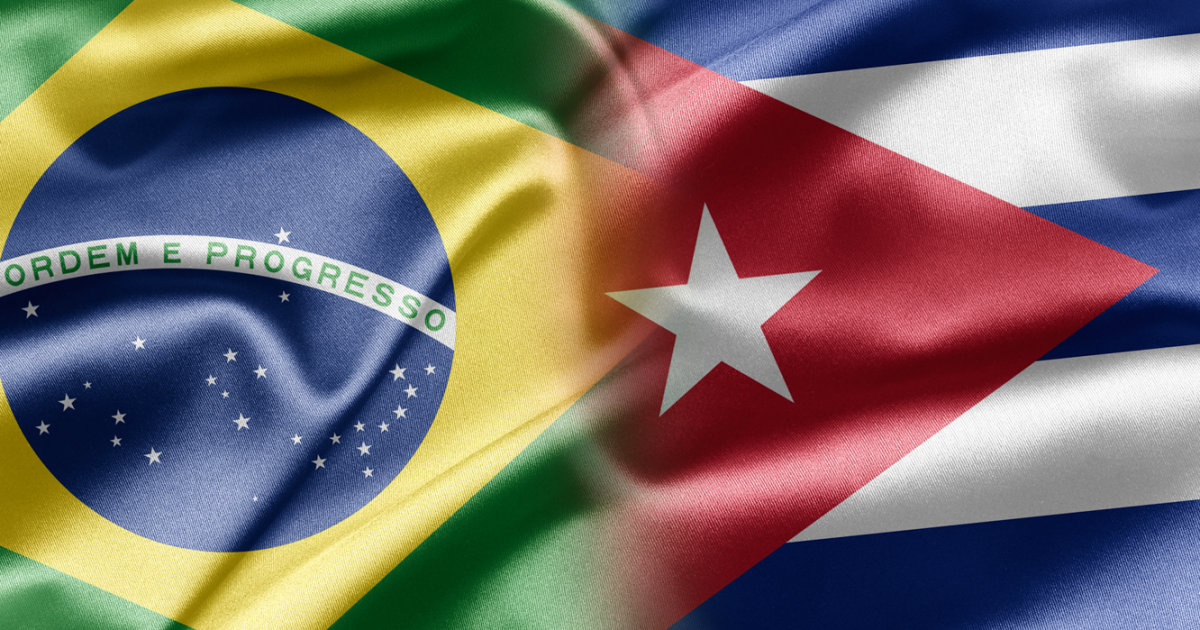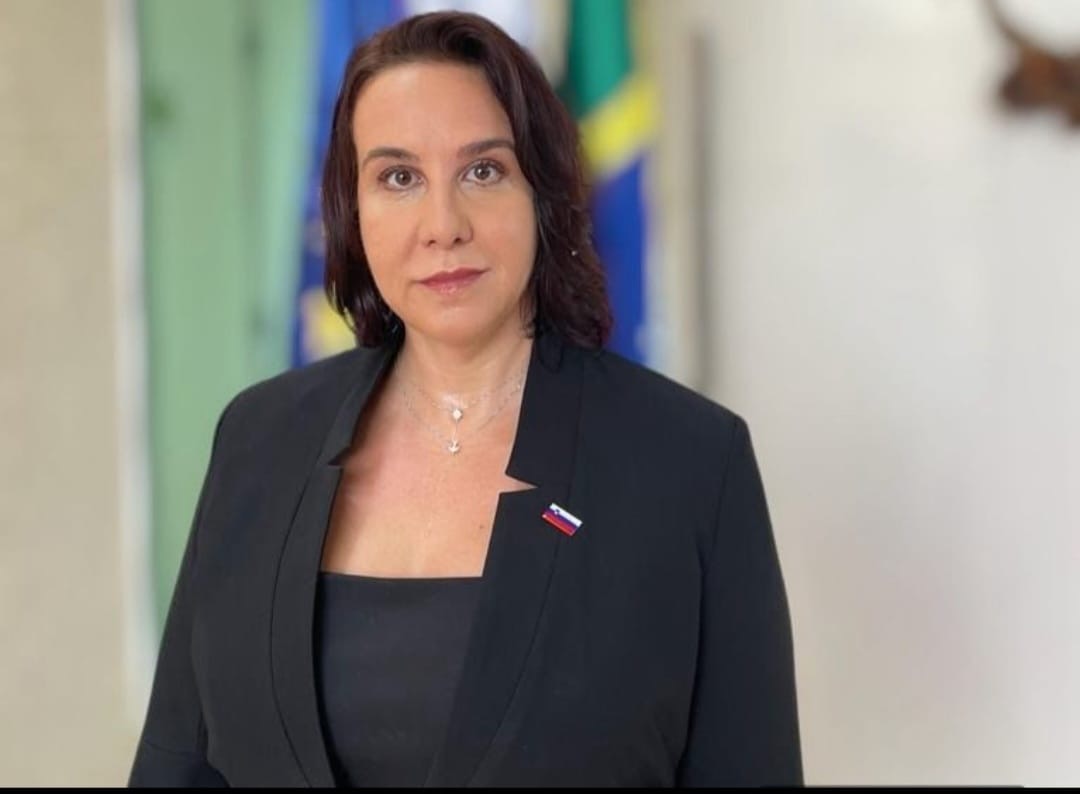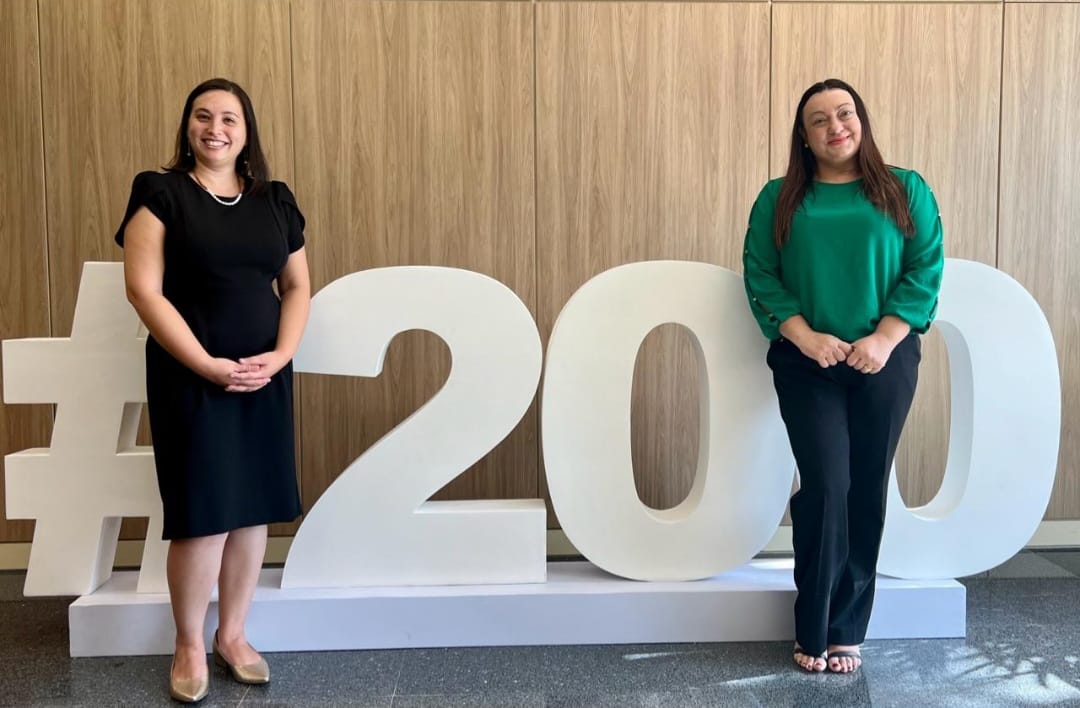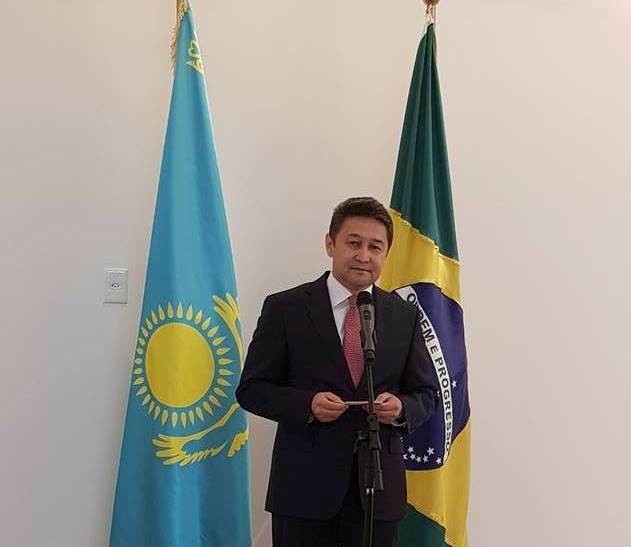- Mr. Ambassador, please inform us about your country’s population, language, religion and other details that Brazilians may not yet know.
I am pretty much sure that Brazilians know this basic information, but I can update this information with pleasure. So, Kazakhstan is located in the centre of the Eurasian continent. Its territory is as large as 2,725 million square kilometers and accordingly it occupies the ninth place in the world by its size. In the North and West the republic has common borders with Russia – 7 591 km (the longest continuous overland border in the world), in the East with China – 1 783 km, in the South with Kyrgyzstan – 1 242 km, with Uzbekistan – 2 351 km and with Turkmenistan – 426 km. The total length of overland borders – 13 200 km. Besides that, there are two midland seas in its territory – the Caspian and Aral. Kazakhstan is the largest country in the world that has no direct access to the World Ocean. Due to the remoteness from oceans the country has an extreme continental climate. The average temperature in January is around −19 °C in the north and −2 °C in the south, the average temperature in July is around +19 °C in the north and +28 °C in the south. Summer is hot and dry, winter is cold and snowy.
The population of Kazakhstan as of June 1, 2017 was 18 014 200 people. According to the national census the ethnic structure of the Kazakhstan society looks as follows:
- Kazakhs – 63,10%
- Russians – 23,70%
- Uzbeks – 2,90%
- Ukrainians – 2,10%
- Uygurs – 1,40%
- Tatars – 1,30%
- Germans – 1,10%
- Others – 4,40%
The state language is Kazakh. The Russian language has the status of an official language of interethnic communication. Recently our President Nursultan Nazarbayev in his article “Course towards the future: modernization of Kazakhstan’s identity” has announced that by 2025 Kazakh alphabet will switch to Latin alphabet. So, by this time Kazakhstan will start publishing workflows, periodicals, textbooks and everything else in the Latin alphabet. This initiative is driven by the specific requirements of the modern technological environment, communications and science and education in the 21st century. The transition to the Latin alphabet is stipulated by globalization and integration. It reflects our commitment to attract foreign investors and strengthen Kazakhstan’s role in regional processes. The state will provide all necessary conditions for citizens to adapt to the new script. Russian language will retain the status of official language in Kazakhstan.
Kazakhstan is a modern, secular state promoting ethnic and religious diversity and tolerance. Our country is often called the crossroads of civilizations. Since ancient times various religions were formed and developed on the territory of modern Kazakhstan. In Kazakhstan, there are followers of almost all world religions: Islam, Christianity, Judaism, Buddhism, Hinduism and others. This is because we are multiethnic country. There are representatives of 130 ethnic groups, who live in the country. Despite the large number of different religions in Kazakhstan, major part of population is divided into Sunni Muslims – 70% and adherents of Russian Orthodox Christianity – 26%.
Apart from statistical data, I would like to point out that on October 10-11, 2018 Astana, Kazakhstan, will host the VI Congress of Leaders of World and Traditional Religions on the theme: “Religious Leaders for a Safe World”. The initiative of holding Congress of Leaders of World and Traditional Religions was launched in 2003 by the President of the Republic of Kazakhstan, Nursultan Nazarbayev. Since then, the Congress has been gathering together participants and delegations from around the world, including leaders and representatives of Islam, Christianity, Judaism, Hinduism, Buddhism and other religions, as well as heads of states and governments, government members, heads of UN agencies and other international organizations. The congress seeks to promote a global dialogue between religions and cultures as well as deepening and strengthening of mutual understanding and respect between religious communities. We look forward to welcoming Brazilian religious and governmental authorities to the VI Congress of Leaders of World and Traditional Religions.
I consider it will be interesting for our Brazilian friends to know that last year on December 16 Kazakhstan marked 25 years of its independence. Last January our country began to fulfill its duties as a non-permanent member of the UN Security Council for 2017-2018. Kazakhstan presided over such major international organizations as the Organization for Security and Cooperation in Europe (OSCE) and the Organization of Islamic Cooperation (OIC), while continuing to engage in the promotion of the most important global and regional initiatives such as the creation of a world free of nuclear weapons, and the Eurasian Economic Union. We joined the World Trade Organization in 2015. We effectively mediate in conflict resolution. Here, I would like to highlight the Astana Peace Process on settling Syrian crisis. We obtained the right to host the international exhibition EXPO 2017, the theme of which is “Future Energy”. On June 9, 2017 there was an official opening ceremony of EXPO 2017 in Astana. 115 countries and 22 international organizations participate in this global event.
Since gaining independence, Kazakhstan has built a solid economy, a stable political system and a prosperous society. In 2012, we entered the list of the 50 most competitive economies in the world. Now our goal is to enter 30 TOP developed countries in the world. To implement this ambitious plan, President of Kazakhstan Nursultan Nazarbayev highlighted in his Annual Address to the Nation the necessity to create a new model of economic growth that will provide the global competitiveness of the country. The new economic modernization plan consists of five top priorities that are to ensure economic growth above the world average and bring the nation closer to its 2050 Strategy’s main goal of joining the top 30 most-developed countries. Thus, the country’s third modernization is not only a mere plan of combating global challenges and threats, but rather a reliable bridge to the future for the growth.
The five priorities that should be carried out to fulfill the goal of the third modernization stipulates, first, an accelerated technological modernization of the economy, which implies the creation of new promising sectors on the basis of digital technologies. Second, fundamental improvement and expansion of the business environment that implies minimization of state involvement in the economy, reduction of all possible costs for businesses and development of public-private partnerships. Agriculture, transport, logistics, real estate market, education, healthcare and social protection of the population among issues of paramount importance in the new development model. Third, macroeconomic stability, the primary goal of which is to restore the stimulating role of the monetary policy and involve private capital into financing the economy. The fourth priority includes improving the quality of human capital. Education is the core of the new model of economic growth and should be focused on developing critical thinking abilities, skills of unaided information search, IT knowledge and financial literacy. And, finally institutional reforms, security and fight against corruption serve as the fifth priority of the new economic model aimed at implementing the best practices and recommendations of the Organization for Economic Co-operation and Development (OECD) and protecting private property, the rule of law and equality before the law. The fight against terrorism, cybercrime and corruption will also be given much more proactive and primary attention within the new third stage.
I hope that the accomplishment of all these reforms will make Kazakhstan even more investment attractive country and could enhance and strengthen political and economic cooperation of Kazakhstan with Latin American states, including Brazil, in the nearest future.
- The Kazakhstan’s Embassy in Brasilia opened in 2013, it is relatively new, could you do a good bilateral relation of import and export Products between both countries, what are the most important cooperation projects between Brazil and Kazakhstan, are there any new cooperation projects to be concluded?
Well, you are right our Embassy is relatively new, as well as the region of Latin America for Kazakhstan. However, we managed to develop our political and economic relations. Brazil is one of our key economic partners in the continent. Since the establishment of diplomatic ties, Kazakhstan-Brazilian relations have witnessed stable development marked by goodwill, friendship and cooperation.
Initially, the impetus for our mutual cooperation has been given by the historical exchange of visits of the President of Kazakhstan Nursultan Nazarbayev in 2007 to Brazil and the President of Brazil Lula da Silva in 2009 to Kazakhstan, which resulted in mutual opening of embassies, establishment of the mechanism of political consultations between our foreign ministries, and improvement of contacts at other levels. We look forward to further enhancing our political dialogue. Moreover, as leader states in our regions, I think, by strengthening our bilateral cooperation we will also enhance ties between Latin America and Central Asia.
Due to significant geographical distance and associated transportation costs our mutual trade turnover does not yet correspond to the potential of our economies. In 2016 our export-import operations resulted in 181.9 million dollars. In January-May of this year we reached 43.5 million dollars of our trade turnover, but in comparison with the same period in 2016 this amount is approximately 22 million dollars less. In my opinion, it is so due to the economic recession, the general downturn in business activity and negative trends in the global economy. However, despite the geographic distance of our countries, both the Kazakh side and our Brazilian partners are committed to mutually beneficial relations and active cooperation on a wide range of issues.
Deputy Minister of Foreign Affairs of Kazakhstan, Mr. Yerzhan Ashikbayev, visited Brazil last May. During the visit we managed to discuss many important issues of bilateral and multilateral agenda with our Brazilian partners, develop Action plan and exchange the list with priority goods for export. Now we are working on expanding our trade turnover based on this priority list for export. Currently, the main items of the Brazilian export to Kazakhstan include sugar, tobacco, machinery and spare parts, building materials, orange juice, meat, while Kazakhstan’s export to Brazil consists of sulfur, ferrosilicon, plastic products, rubber and ferrous metals.
Currently we are planning to invest in the logistics complex “South Port”, the construction of which is being conducted in Bahia by the “Bahia Mineração” company. The company is controlled by the “Eurasian Resources Group” company, the 40% of shares of which are owned by Kazakhstan’s Government. This port will be actively used to export mineral resources, as well as other products. We believe that the Kazakh side in the future will be able to deliver its export products to the Latin American region through this port. We also look forward to enhancing our economic relations with Brazil in the sphere of agriculture, metallurgy, energy. The promotion of B2B ties and increase in the flow of tourists can also be stimulated by the visa-free regime existing between Kazakhstan and Brazil since September 2016.
- Could you, please, tell us about tourism in your country and give us some ideas that would be interesting for Brazilians.
Kazakhstan is a unique place for tourism because of its history, geographical peculiarity, climate and nature. The nature of Kazakhstan is ideal for ecological tourism. There are a huge variety of landscapes. The mountains covered with snow, the waters of cool lakes, dense forests and boundless steppes are very attractive and are the habitat of numerous species of fauna. There are 12 national natural parks, 10 nature reserves and other picturesque natural objects on the territory of Kazakhstan. Acquaintance with the life of the nomadic culture, in which hospitality is considered a great honor, is an integral part of ecological tourism and an emotionally bright addition of impressions from visiting Kazakhstan.
We also have mountain tourism. The Tien-Shan and Altai Mountains are popular both among followers of mountain tourism, and professionals with special skills and abilities.
Kazakhstan is also an ideal place for medical and health tourism, as the country is rich not only with curative natural resources, but also with modern sanatoria that are located in natural areas. Health tourism is spread throughout Kazakhstan, so you can easily combine rest with treatment in any areas of the country.
Kazakhstan, with its archeology, history, architecture and monumental art, is an open-air museum. In Kazakhstan there are more than 25 thousand immovable monuments and geographical sights. The objects of the historical and cultural heritage of Kazakhstan are recognized as UNESCO’s World Heritage Sites and are protected by this organization.
You should definitely visit Medeo High-Mountain Skating Rink, Chimbulak Ski Resort, Bayterek Tower in Astana, Charyn Canyon – Grand Canyon’s ‘Little Brother’ as people call it, Hazret Sultan Mosque, Astana Opera Theater, “Khan Shatyr” shopping and entertainment center and etc.
So, in one word, there are a lot of place to visit in Kazakhstan that our friends from Brazil must not miss.
Given that since September 2016 Kazakhstan and Brazil have a visa-free regime for 30 days, we can broaden our tourist flow and enhance people-to-people ties between our countries.
Here I would like to take this opportunity and inform that from October 23 to November 3, 2017 the Embassies of Azerbaijan, Kazakhstan and Turkey jointly with the Senate of the National Congress of Brazil and the International Organization for Turkic Culture “TURKSOY” is holding the photo exhibition of the Cultural heritage of Azerbaijan, Kazakhstan and Turkey – “A Piece of Turkic World in Brazil”. I would like to invite our Brazilian friends to visit this exhibition and get acquainted with the Turkic cultural heritage.
- Are there any scholarship programs for Brazilians to study at Kazakhstani Universities?
In 2013 during the official visit of the Minister of Foreign Affairs of Kazakhstan to Brazil we inked the Memorandum of understanding between the Academy of Public Administration under the President of Kazakhstan and the Rio Branco Institute of the Ministry of Foreign Affairs of Brazil to promote closer collaboration on training diplomats. Currently we are implementing the agreements stipulated in this document through the Joint Action Plan between the two institutions.
However, unfortunately, there are no other governmental scholarship programs for Brazilian students to study in Kazakhstan, except diplomats. But we have a lot of universities, especially in Astana and Almaty, which conduct classes in English. Therefore, Brazilian students, who wish to study in Kazakhstan, can be enrolled to one of these universities on the contractual basis. The average tuition fee is around 3000 to 6000 US dollars depending on the academic degree program and specialization. Yet, universities provide some discounts following the results of entrance exams.
Currently, Embassy jointly with the Kazakh University of International Relations and World Languages and the University of Brasilia is elaborating on the opportunity to provide two or three scholarships to Brazilian students to study in the Kazakh University. I hope we can implement this goal in the nearest future.
